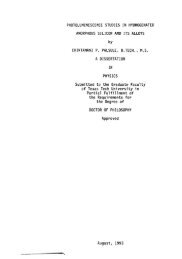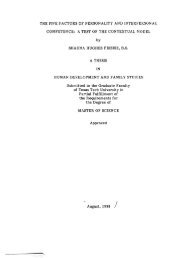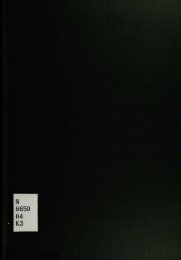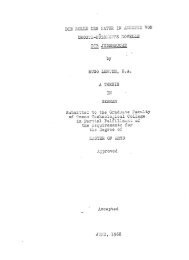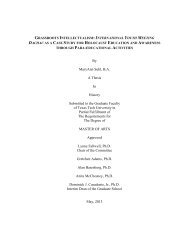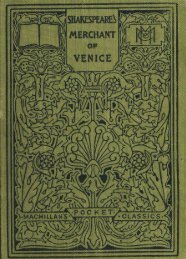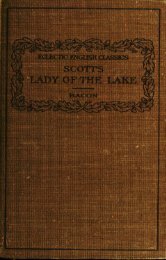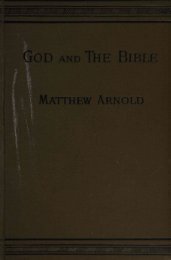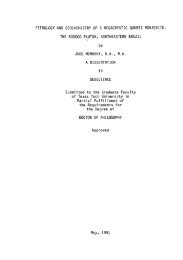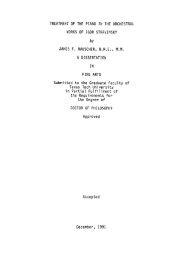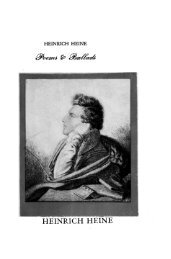THE SOUNDSCORE TO heartBEAT: A NARRATIVE-FORM MUSIC ...
THE SOUNDSCORE TO heartBEAT: A NARRATIVE-FORM MUSIC ...
THE SOUNDSCORE TO heartBEAT: A NARRATIVE-FORM MUSIC ...
You also want an ePaper? Increase the reach of your titles
YUMPU automatically turns print PDFs into web optimized ePapers that Google loves.
CHAPTER I<br />
HIS<strong>TO</strong>RICAL PERSPECTIVE<br />
Introduction<br />
<strong>heartBEAT</strong> is an attempt to relate aural and visual sensation as a single, unified<br />
aesthetic experience. This desire has produced, throughout history, numerous attempts at<br />
combining these two modes of perception. Such efforts have been both theoretical and<br />
practical in nature, originating from the interrelated fields of philosophy, science, art,<br />
drama and music.<br />
Synaesthgsia<br />
The tendency to associate between aural and visual sensation is a common one,<br />
observable in such familiar areas as language. Descriptive phrases such as "loud reds"<br />
and "muted browns" are useful and accepted metaphors. In music, string sounds can be<br />
"bright" and a voice "dark." The association can be more complex, however, not limited<br />
merely to the senses of sight and hearing. The Cherokee Indians had color associations<br />
with the sense of direction. South was seen to be "white," North "blue," East "red,' and<br />
West "black."^ Though in no way conclusive, these examples do suggest a complex and<br />
highly subjective relationship between the senses.<br />
This relationship is known as synaesthesia. Traditionally, the term describes a<br />
particular psychophysical experience, in which the stimulation of a single sense arouses<br />
images from the other senses. To such an individual, the sound of a bassoon may have a<br />
characteristic color and taste, as well as sound. One of the most common manifestations<br />
of the synaesihetic experience is "colored hearing." Widely noted by researchers in the<br />
early part of this century, synaesthetic individuals were reported as having strong color<br />
sensations from a variety of auditory stimuU.^ One blind subject, for example,<br />
professed a sudden understanding of the color "purple," as "the sound of a trumpet.'



